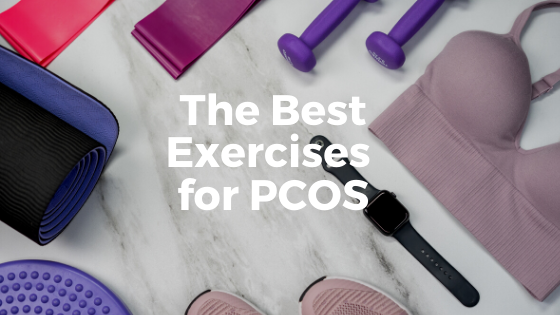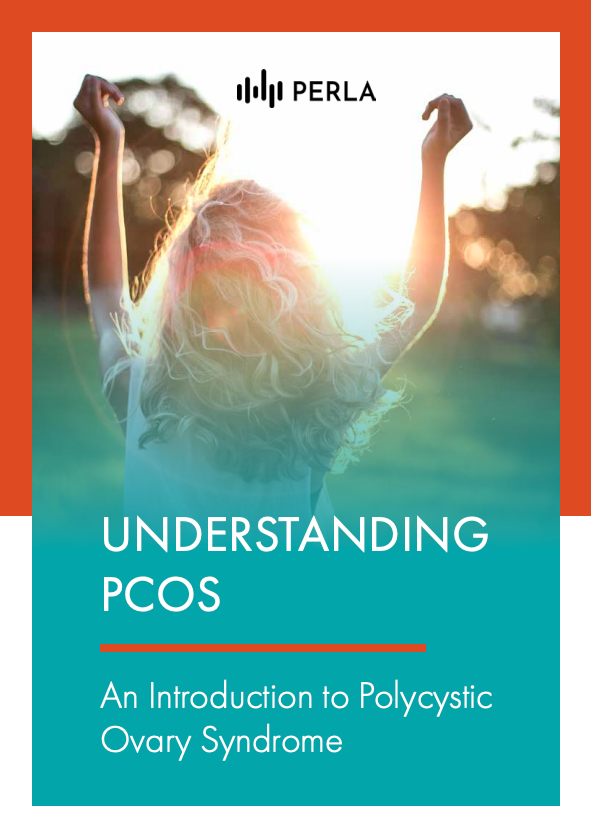Many women with PCOS (Polycystic Ovary Syndrome) who want to get rid of the bothersome symptoms — such as hirsutism, scalp hair loss, weight gain, acne, and irregular periods— or are trying to conceive have heard that physical activity might benefit them. But what types of exercise are best for PCOS?
Why Should You Exercise?
Exercise proves to be one of the best supportive options for the management of PCOS, and may help with reducing symptoms and restoring hormone balance and fertility.1 Regular exercise helps with insulin resistance in two ways: First, it can help with the reduction of belly fat, which is strongly associated with insulin resistance.
Second, it can increase the body’s insulin sensitivity by regulating the expression of insulin signaling proteins in the skeletal muscle. The skeletal muscle takes in the bulk of glucose we ingest every meal. 2
It’s not much of a surprise that exercise has a powerful impact on your health, as it can prevent, improve, or even delay a range of medical conditions. In PCOS, it is not only able to help reduce symptoms, it can also lower your risk for complications such as issues to conceive, diabetes, metabolic syndrome, heart disease, sleep apnea, and mood disorders.
Easier said than done
While it is easy to advocate for exercise, many people find it hard to exercise regularly. We are often too busy and just don’t have any time. The truth is, working out will always feel difficult. But with the proper mindset and approach, it is possible to turn it into a fun and instinctive habit.
Many people fail to stick with their fitness plan because they try to commit to an unsustainable exercise routine. The best types of exercises—with or without PCOS—is the one you enjoy and can stick with for the long haul. If you need help in starting an exercise plan, talk to your PCOS care team. You may even want to talk to a personal trainer trainer that has experience with working with women with PCOS, and see what they would recommend for you.
Exercise Types for PCOS
There is no one type of exercise that experts can agree on and recommend. Results from a recent meta-analysis suggest that vigorous-intensity exercise, at a minimum of 120 minutes per week, may offer the greatest improvements in terms of cardiorespiratory fitness, body composition, and insulin resistance. 3
Another literature review of studies published in the journal of Medicine finds moderate evidence that aerobic exercise alone can impact body composition in women with PCOS.4
But whether you prefer swimming or doing HIIT workouts, a great body of studies agree on one thing: there is no sufficient evidence that a specific type of exercise is better than others.5 Any type of exercise helps with PCOS. Here are some types you should consider:
Aerobic Exercise
Aerobic exercises are activities that provide cardiovascular conditioning.6 Cardio exercise and aerobic exercise are often used interchangeably. While the words came from different origins, they are essentially the same and provide the same benefits. The process of increasing your breathing and heart rate improves physical fitness. Jogging, brisk walking, cycling, or using the elliptical trainer are types of aerobic exercises that can help with PCOS.
Strength Training
Strength training, also known as weight training, reduces fat tissue, and builds more muscle mass and bones. What’s good about strength training is your body burns more calories long after your workout is over, helping you maintain a healthy weight. When you have a higher muscle to fat ratio, your body can regulate insulin better.7 This type of pf exercise involves using weights, resistance bands, or your body weight to make your muscles work harder than usual.
High-Intensity Interval Training (HIIT)
It’s harder to lose weight with PCOS, so some are tempted to workout harder when the scales won’t budge. HIIT, even without weight loss, improves insulin resistance and body composition in women with PCOS.8 But there’s no need to overdo it. Pay attention to how you’re feeling while you’re working out. Don’t push yourself to the point of pain, stress, or injury. If it takes days for you to recover after a super intense workout, it may not be for you.
Mind-Body Workout
Physical activities like yoga, tai chi, Pilates, and qi gong help improve balance, strength, flexibility, and overall health. Women with PCOS are at increased risk of developing anxiety and depression because of enhanced bodily response to stress.9 Mind-body exercises burn calories; improve muscle strength and tone; and reduce stress levels that can worsen PCOS.
Yoga appears to have beneficial effects on cholesterol and insulin levels in women with PCOS. A study published in the International Journal of Gynecology and Obstetrics found that yoga is more effective than conventional exercise in improving glucose, insulin, and lipid levels in adolescent girls with PCOS.10
Conclusion
Our modern lifestyle is often quite inactive and includes a lot of sitting, so it’s a good idea to find a workout that you enjoy. You can try out several different types of workouts, and see what you enjoy the most. It might even be worth it to discuss it with a personal trainer that is experienced in working with women with PCOS, as they can help you put together a workout routine that works for you. You can also look for a workout buddy, as working out together can help with holding each other accountable, and can be a lot of fun.
If you can make a habit of working out, whether it’s Yoga, HIIT or strength training, you will almost certainly feel the positive effect on your body, your symptoms of PCOS and your overall health and well-being.
Sources:
- Chandrasekaran B, Shetty D, Singh A, Oliverraj J. Exercise in polycystic ovarian syndrome: An evidence-based review. Saudi Journal of Sports Medicine. 2017;17(3):123. doi:10.4103/sjsm.sjsm_10_17
- Wang S, Zhang Z, Liu Y. Effects of Exercise Intervention on the Improvement of Polycystic Ovary Syndrome. Polycystic Ovarian Syndrome. Published online April 15, 2020. doi:10.5772/intechopen.88896
- Patten RK, Boyle RA, Moholdt T, et al. Exercise Interventions in Polycystic Ovary Syndrome: A Systematic Review and Meta-Analysis. Frontiers in Physiology. 2020;11. doi:10.3389/fphys.2020.00606
- dos Santos IK, Ashe MC, Cobucci RN, Soares GM, de Oliveira Maranhão TM, Dantas PMS. The effect of exercise as an intervention for women with polycystic ovary syndrome. Medicine. 2020;99(16):e19644. doi:10.1097/md.0000000000019644
- Stepto NK, Patten RK, Tassone EC, et al. Exercise Recommendations for Women with Polycystic Ovary Syndrome: Is the Evidence Enough? Sports Medicine. 2019;49(8):1143–1157. doi:10.1007/s40279-019-01133-6
- Cleveland Clinic. Aerobic Exercise Health Information | Cleveland Clinic. Cleveland Clinic. Published 2011. https://my.clevelandclinic.org/health/articles/7050-aerobic-exercise
- Winett RA, Carpinelli RN. Potential Health-Related Benefits of Resistance Training. Preventive Medicine. 2001;33(5):503-513. doi:10.1006/pmed.2001.0909
- Almenning I, Rieber-Mohn A, Lundgren KM, Shetelig Løvvik T, Garnæs KK, Moholdt T. Effects of High-Intensity Interval Training and Strength Training on Metabolic, Cardiovascular and Hormonal Outcomes in Women with Polycystic Ovary Syndrome: A Pilot Study. PLoS One. 2015;10(9):e0138793. Published 2015 Sep 25. doi:10.1371/journal.pone.0138793
- Woodward A, Klonizakis M, Broom D. Exercise and Polycystic Ovary Syndrome. Physical Exercise for Human Health. Published online 2020:123-136. doi:10.1007/978-981-15-1792-1_8
- Nidhi R, Padmalatha V, Nagarathna R, Ram A. Effect of a yoga program on glucose metabolism and blood lipid levels in adolescent girls with polycystic ovary syndrome. International Journal of Gynaecology and Obstetrics: The Official Organ of the International Federation of Gynaecology and Obstetrics. 2012;118(1):37–41. doi:10.1016/j.ijgo.2012.01.027


